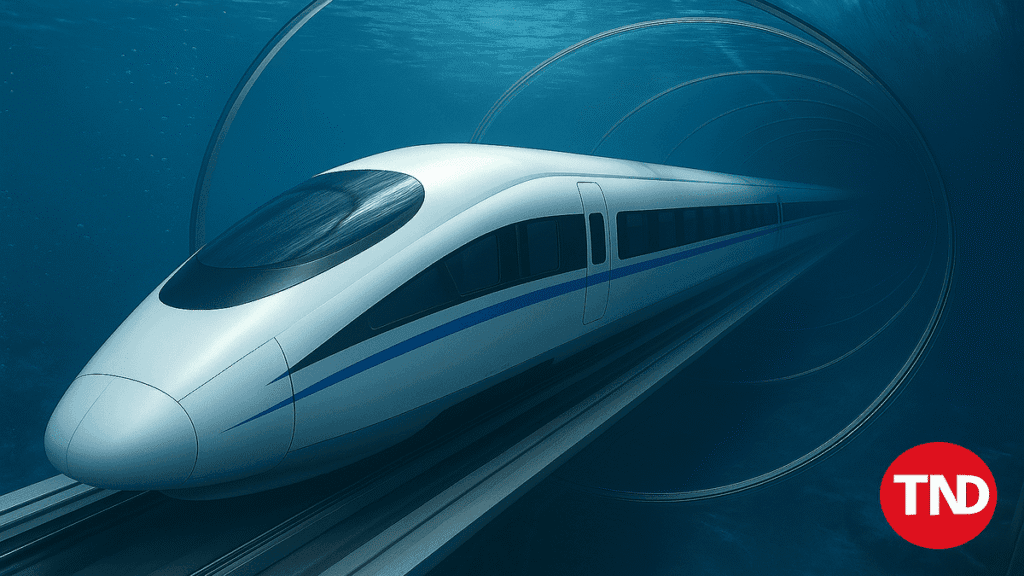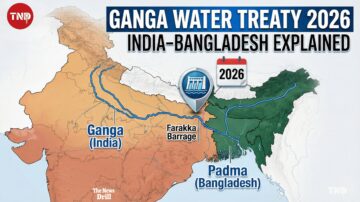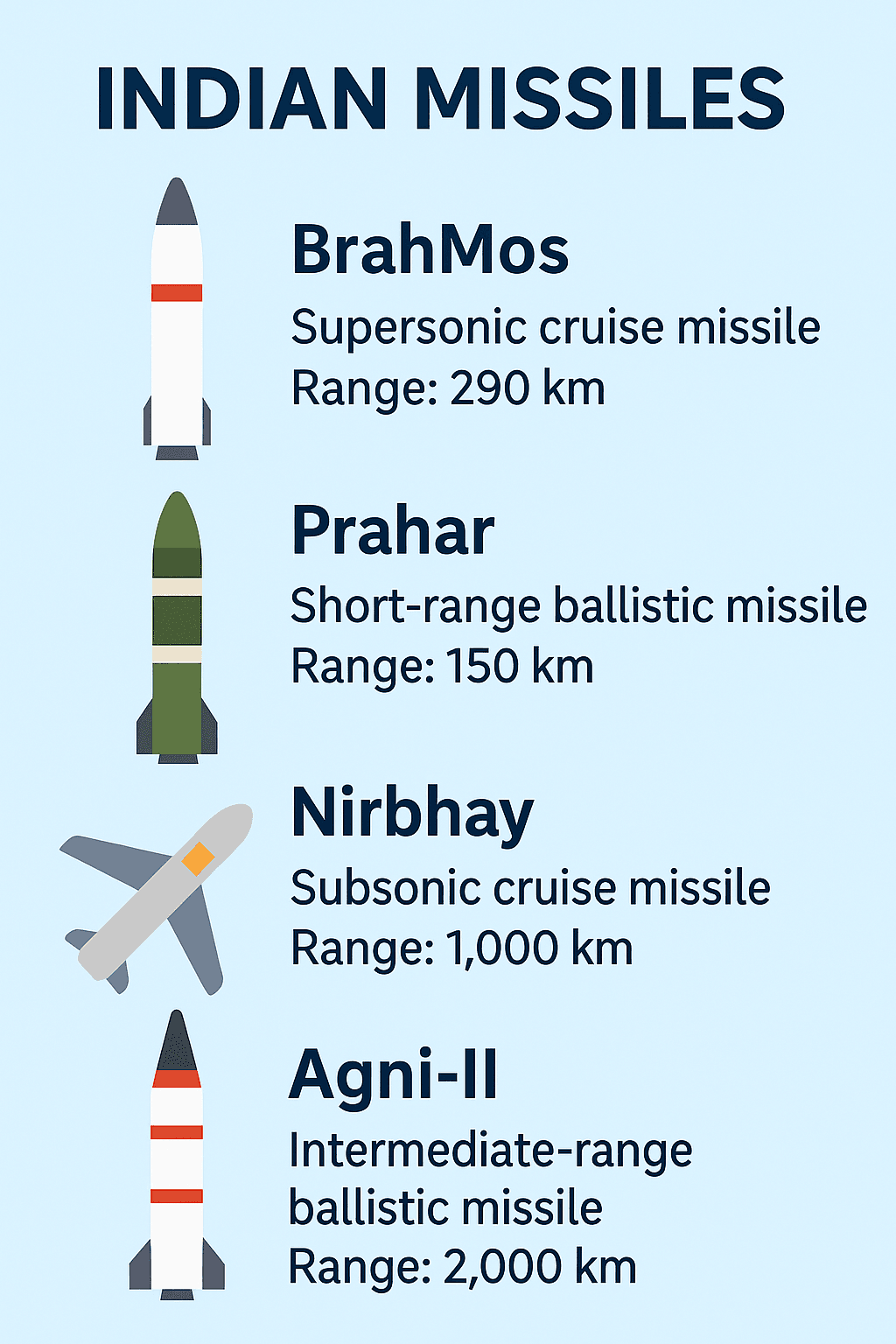
Dubai, UAE – July 18, 2025 | The United Arab Emirates has unveiled ambitious plans for what would be the world’s first underwater bullet train, forging a high speed link between Dubai and Mumbai that could reshape international travel and trade.
- Vision of a futuristic underwater bullet train
- Key features and strategic advantages
- Engineering and environmental challenges
- Status and timeline
- Economic and tourism potential
- Conclusion
- FAQs: Underwater Bullet Train – Dubai to Mumbai Project
- What is the underwater bullet train between Dubai and Mumbai?
- How long will the Dubai-Mumbai underwater bullet train take to travel?
- Who is developing the underwater bullet train project?
- What technology will the underwater bullet train use?
- Is the underwater bullet train project approved?
- When is the underwater bullet train expected to launch?
- Will the train also carry cargo or only passengers?
- How much will the underwater bullet train cost to build?
Vision of a futuristic underwater bullet train
The underwater bullet train project envisions a 2,000 kilometre subsea rail tunnel beneath the Arabian Sea, connecting Fujairah (UAE) to Mumbai (India). Using maglev or hyperloop inspired technology, the train would reach speeds between 600 and 1,000 km/h, potentially slashing travel time to just two hours. If successful, this underwater bullet train would be the first intercontinental rail tunnel of its kind.
Key features and strategic advantages
- High speed technology: Passengers would travel at speeds up to 1,000 km/h, making the underwater bullet train faster than many flights and reducing travel time dramatically.
- Cargo and resource transport: Beyond passenger service, the corridor is designed to carry oil exports from Fujairah to Mumbai and freshwater imports from India’s Narmada River to the UAE, leveraging pipelines integrated into the tunnel infrastructure.
- Economic integration: The project supports the India–Middle East–Europe Economic Corridor (IMEEC), boosting bilateral trade, tourism, and investment ties.
- Sustainability focus: Powered by renewable energy, the underwater bullet train aims to reduce carbon emissions compared to conventional air travel and shipping.
Engineering and environmental challenges
Despite its promise, the underwater bullet train faces formidable technical and environmental hurdles:
- Constructing a 2,000 km subsea tunnel is unprecedented: the current longest underwater rail tunnel spans only about 54 km. Achieving pressure resistance, watertight integrity, and seismic stability under the Arabian Sea will require major innovation.
- Marine ecosystem protection is critical: construction could disrupt marine life, underwater pipelines, and migratory patterns, demanding rigorous environmental impact assessments and mitigation strategies.
- Massive financial outlay: the project is expected to cost billions of dollars, requiring public and private investment across India and the UAE.
- Regulatory coordination: alignment between Indian and UAE governmental bodies on legal frameworks, permits, and construction standards is essential. Feasibility studies are ongoing, but no formal approvals have been granted yet.
Status and timeline
Currently in the feasibility stage, the under water bullet train is being led by UAE’s National Advisor Bureau Limited. Despite its early stage, target operational launch is tentatively set for by 2030, pending technical validation and financial backing. Conceptual design work began as early as 2021, and global interest continues to grow.
Economic and tourism potential
If realized, the under water bullet train would transform people and cargo movement between South Asia and the Gulf:
- Tourism surge: Faster travel is expected to boost Indian tourism to Dubai (which already welcomed over 2 million Indian visitors in 2024), and vice versa.
- Business synergy: With two hour transit time, executives can commute efficiently; trade corridors would expand via integrated oil and water transport. This could accelerate bilateral trade forecasts beyond US $100 billion by 2030.
- Global precedent: A successful launch would establish a model for similar intercontinental underwater projects worldwide.
Conclusion
The proposed UAE under water bullet train linking Dubai and Mumbai stands as one of the most visionary infrastructure propositions in modern history. If brought to life, it would slash travel to just two hours, support cargo exchange, bolster bilateral trade, and redefine sustainable international transit. For now, feasibility studies continue as stakeholders evaluate the engineering, environmental, and economic feasibility of this landmark project. Further updates are anticipated as planning progresses toward a possible 2030 rollout.
FAQs: Underwater Bullet Train – Dubai to Mumbai Project
What is the underwater bullet train between Dubai and Mumbai?
The underwater bullet train is a proposed high speed railway project that aims to connect Dubai (UAE) and Mumbai (India) via a 2,000 kilometre underwater tunnel. It will be the world’s first underwater intercontinental bullet train using futuristic maglev or hyperloop technologies.
How long will the Dubai-Mumbai underwater bullet train take to travel?
The estimated travel time on the underwater bullet train is expected to be around 2 hours, significantly faster than the current 3–4 hour flight duration.
Who is developing the underwater bullet train project?
The project is being conceptualized by UAE’s National Advisor Bureau Limited, with potential collaborations between Indian and Emirati government agencies, along with private sector stakeholders.
What technology will the underwater bullet train use?
It will likely use maglev (magnetic levitation) or hyperloop-inspired systems, allowing speeds of 600–1,000 km/h through a pressurized tunnel beneath the Arabian Sea.
Is the underwater bullet train project approved?
As of now, the project is in the feasibility and planning stage. Formal approvals and technical assessments are still pending. It may take several years before construction begins.
When is the underwater bullet train expected to launch?
If feasibility studies and funding are secured, the underwater bullet train is expected to be operational by 2030 or later.
Will the train also carry cargo or only passengers?
The train is expected to carry both passengers and cargo, including oil exports from the UAE and freshwater imports from India, with pipelines embedded in the infrastructure.
How much will the underwater bullet train cost to build?
While official figures have not been released, estimates suggest the project could cost tens of billions of dollars, making it one of the most expensive transport infrastructures in the world.
















